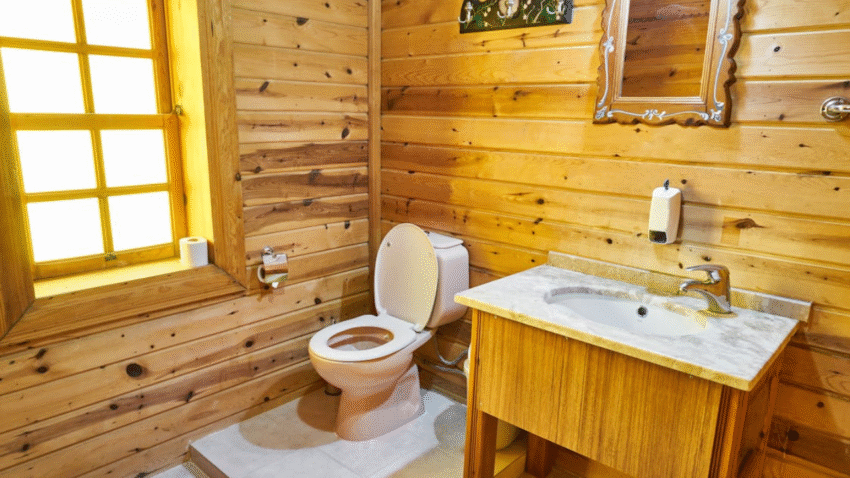Introduction
Noticing dust buildup or poor airflow in your bathroom? This guide on how to clean bathroom vents will show you exactly how to remove dirt, dust, and grime from your exhaust fan to keep your bathroom fresh, safe, and well-ventilated. Dirty vents are a common source of bad odors and high humidity, yet they’re one of the most neglected parts of the bathroom.
Why Cleaning Bathroom Vents Matters
Bathroom vents play a vital role in reducing moisture, controlling odors, and preventing mold growth. When these vents are clogged with dust, lint, or mildew, airflow is restricted—leading to foggy mirrors, peeling paint, and even mildew buildup on walls and ceilings.
A clean bathroom vent ensures better air quality, improves the performance of your exhaust system, and prolongs the life of the fan motor. It also makes your daily cleaning more effective, as stale, moist air won’t linger after showers or toilet use. Regular vent maintenance supports a healthier and more comfortable bathroom environment.
Step-by-Step Guide to Cleaning Bathroom Vents
Step 1: Turn Off the Power
Before doing any cleaning, turn off the fan at the circuit breaker to prevent injury. If you can’t locate the breaker, at minimum, switch the fan off at the wall and confirm it isn’t running during the process.
⚠️ Working on vents connected to electricity requires caution. Always put safety first.
Step 2: Remove the Vent Cover
Most bathroom vent covers can be removed by gently pulling down. There may be spring clips on each side—pinch these to release the cover from the ceiling. If there are screws instead, use a screwdriver to detach the cover.
Place the cover in a bucket of warm, soapy water to soak while you clean the rest of the vent system.
Step 3: Vacuum Dust and Debris
Use a vacuum with a hose attachment to remove as much loose dust as possible from inside the fan housing and around the motor. Be gentle to avoid damaging any wires or small components.
💡 For tight areas, use a small brush attachment or even an old toothbrush to loosen built-up debris before vacuuming.
Step 4: Wipe Down the Fan Components
Use a microfiber cloth dampened with a mild cleaning solution (like water and dish soap) to wipe down:
- The fan blades (if visible and reachable)
- The inner edges of the vent housing
- Any visible grime or mildew inside the cavity
Avoid dripping water into the motor. For more stubborn buildup, lightly dampen a cloth with vinegar or an all-purpose cleaner and scrub gently.
Step 5: Clean and Rinse the Vent Cover
While the cover is soaking, scrub it with a soft brush to remove dust, dirt, and mildew. Rinse it thoroughly with clean water and dry it with a towel or let it air dry completely.
🌿 If your cover has mold spots, add ½ cup of white vinegar or a few drops of tea tree oil to the soaking water to help kill spores.
Step 6: Reattach the Vent Cover
Once everything is clean and dry, reattach the vent cover by snapping the clips or tightening the screws. Turn the power back on at the circuit breaker and test the fan to ensure it runs quietly and smoothly.
Step 7: Optional – Replace the Filter (if applicable)
Some modern bathroom vent fans come with a filter. Check your unit’s manual. If there’s a washable or replaceable filter, clean or replace it according to the manufacturer’s instructions for best performance.
Common Mistakes to Avoid
Mistake 1: Skipping the Power Shut-Off
Cleaning a live fan risks electric shock or damage to the motor.
Solution: Always shut off power at the breaker before starting.
Mistake 2: Using Harsh Chemicals
Bleach or abrasive cleaners can damage plastic vent covers or corrode fan components.
Solution: Use mild soap and water or vinegar-based solutions for safe and effective cleaning.
Mistake 3: Forgetting to Dry Components
Moisture left inside the fan housing can lead to mold growth or electrical issues.
Solution: Always dry all parts thoroughly before reassembling.
Mistake 4: Not Cleaning Often Enough
Letting dust and debris accumulate reduces airflow and strains the fan motor.
Solution: Clean the bathroom vent every 3–6 months, especially in high-use bathrooms.
Mistake 5: Ignoring Fan Noise
A noisy fan often means dust buildup or a struggling motor.
Solution: Clean the fan immediately and check if it needs lubricating or replacing.
Extra Tips & Bathroom Hacks
- Upgrade to a humidity-sensing fan: These activate automatically when moisture levels rise, preventing mold and reducing the need for constant manual use.
- Use a dusting spray: After cleaning, a light coat of anti-static spray on the vent cover can reduce future dust buildup.
- Add vent cleaning to your seasonal checklist: A quarterly routine keeps your bathroom air clean year-round.
🧽 For more bathroom cleaning help, check out our article on how to clean mold off bathroom walls for deeper hygiene solutions.
Conclusion
Bathroom vents are essential for maintaining a fresh, dry, and mold-free environment. A quick clean every few months improves ventilation, protects your fixtures, and keeps your air fresh. With just a few basic tools and some care, your exhaust fan will run better and last longer.
🌀 Make this task part of your regular cleaning rotation and enjoy the benefits of a truly clean bathroom.
Bookmark this guide to stay on top of your bathroom maintenance like a pro.
